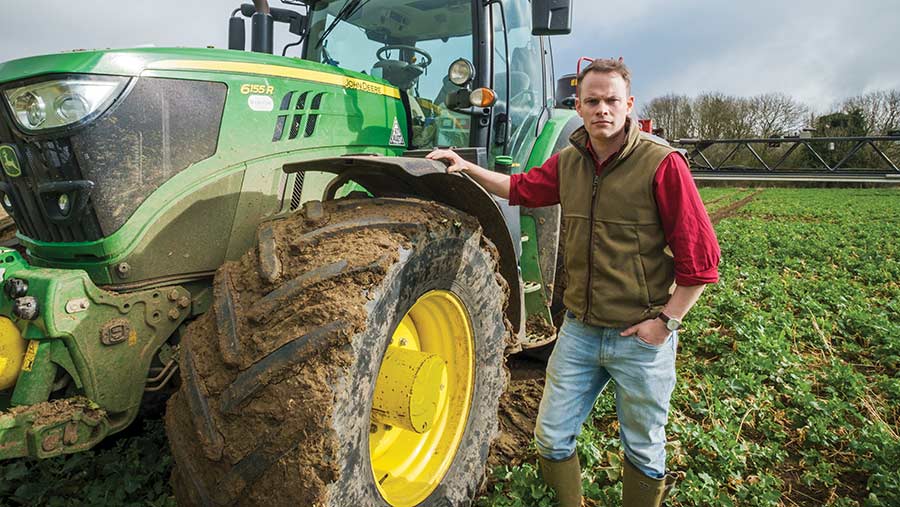Farmer Focus: Cover crop grazing stalls lamb growth
 Robert Scott © Jason Bye
Robert Scott © Jason Bye I signed off 2023 with a downbeat article forecasting an agricultural depression. While I still maintain this as we batten down the hatches, I am trying to start the new year with a cheerier mindset.
Firstly, NFU Sugar has done a superb job of agreeing a sugar beet price without going to arbitration.
This was followed by Defra ringing in 2024 with the welcome announcement of an uplift to environmental payments, and a raft of other new actions.
See also: Nuffield Scholar assesses the benefits of cover cropping
I do worry this could force rental values upwards for competing arable crops, and further reduce land available for tenant farming.
Having said this, environmental payments need to be comparable with marginal agriculture to encourage uptake and drive landscape change.
Our cover crops have been very poor this year. They were established too late after a protracted harvest. We managed to graze a third of them, predominantly where root crops will follow.
I do this as the soil is inevitably being tilled post-grazing, and therefore sheep trampling isn’t a problem. The ungrazed remainder will be direct drilled with spring cereals or legumes.
We are fully stocked with winter store lambs on track from the north of England. It is important for the lambs to get a good start; spending eight weeks grazing ryegrass haylage aftermaths before moving onto cover crops.
This year, weight gain has stalled or even gone backwards since moving onto cover crops, as they are lacking biomass and it has been so wet.
I have put two thirds of the flock onto turnips early, to recoup some weight and finish them by the end of February.
We continue to plant hedges on our home farm, with the payment rate making this a very profitable way of keeping arable labour busy over the winter months.
Similarly, our first hedge has been laid and it is a delight to see. Art in the countryside is the best description. I only wish we’d elected to lay more within our current scheme.
Lastly, we began the hunt for one of the rarest things in modern agriculture; the lesser-spotted farm secretary. Thanks to the powers of social media, the inbox is surprisingly full of CVs. Perhaps the future is bright after all.


